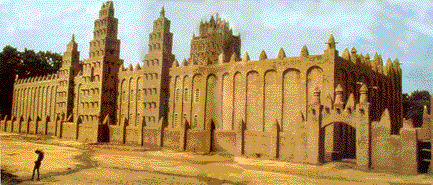
Courtesy Aga Khan Award for Architecture

Playing with local vernaculars, master mason Lassiné Minta designed and built this
striking mosque with volunteer craftsmen, members of its congregation. In this poor,
rural region, buildings are typically constructed out of mud bricks, mortar made of clay
and hardened rice bran, and timber for the roofs; their simple, curving lines minimize
erosion. Yet when this mosque was erected in 1973, such buildings were beginning to lose
ground to more expensive-and banal-imported concrete-and-steel structures. By honoring
the mosque in 1983, the Aga Khan Trust for Architecture hoped to encourage exploration
of traditional forms. Here, Minta has taken the unusual step of decorating the facade
with pilasters that echo the interior's arches, topping them with sometimes contrapuntal
pinnacles. The vented windows are another invention. While applauding the use of mud
construction for its durability, climatic sensitivity, and recyclability, the jurors
also noted the ironic fact that timber roofing is helping speed Mali's deforestation.
|